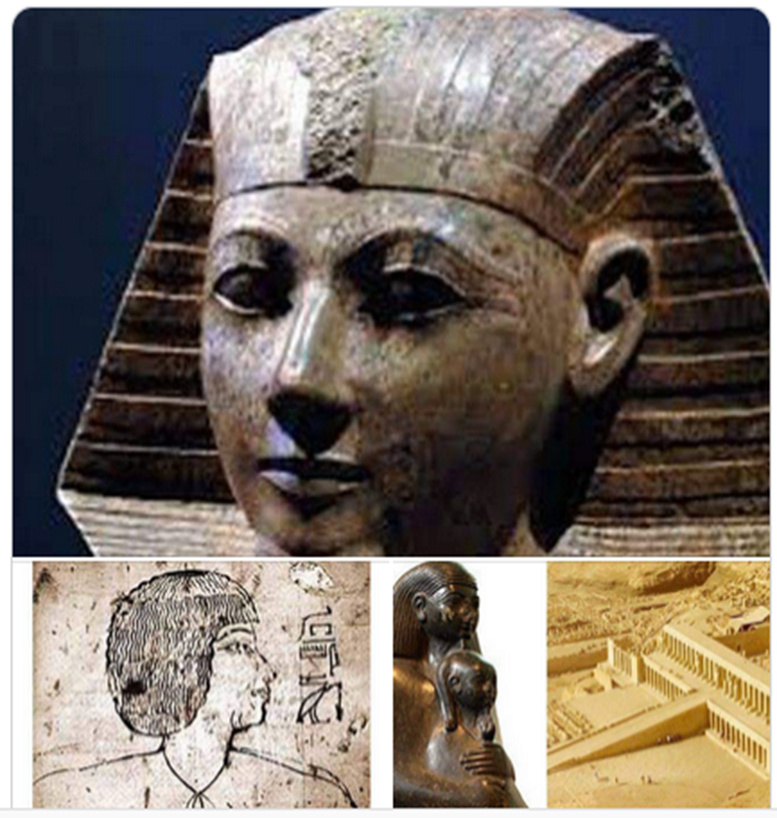The engineer who built Queen Hatshepsut's famous temple

Senenmut, one of the greatest engineers of ancient Egypt, loved Queen Hatshepsut, so she granted him about 80 royal titles. He was eliminated and stripped of his position.
The story of "Senenmut" is one of the greatest architects of ancient Egypt, who loved Queen Hatshepsut, so she reciprocated that and granted him about 80 royal titles. However, unlike some love stories in history, which often have happy endings, this story ended with the builder of the Temple of Hatshepsut, which is considered the most famous in Egyptian history. It ended in a strange and tragic way, as he was stripped of his position, all traces of him were erased, and his monuments were demolished.
Senenmut, which means "brother of the god Mut," was born to two commoner parents, "Ramos" and his mother, "Hatnofer." He had three brothers. Before meeting Hatshepsut, he worked as high priest in the Temple of Montu in the town of Armant. He also worked in the Karnak Temple, where he was called the director of the House of Amun, where he was. Supervisor of stores, grains and livestock.
As for Queen Hatshepsut, whose name means “the most noble of women,” she was twenty years old when her father Thutmose I died, and she was the heir to the throne, but court traditions and the intrigues of the priests began to interfere because women’s guardianship angered many people, so it was necessary to involve her half-brother, Thutmose II, and even In order not to cause unrest, she married him and joined him in power, and he had two legitimate daughters by her, and she remained in power for 22 years, 1503-1482 BC.
Hatshepsut entrusted him with the responsibility of caring for her daughter, Neferu Ra, as he was her private tutor and the person in charge of managing her property. This daughter died in the eleventh year of her mother’s reign, and it is also believed that Senenmut was the guardian of Hatshepsut’s other daughter, Merit Ra.
Senenmut also designed the funerary temple of Hatshepsut in Deir el-Bahari near the entrance to the Valley of the Kings in the form of three tiered floors, and also transferred her obelisks to the Karnak Temple, and the naval mission that she sent to the land of Punt. Hatshepsut allowed the architect of ancient Egypt to place his name and image behind one of the main doors of her temple.

She also allowed him to build his tomb near her temple, which recorded many expressions of praise for Hatshepsut.
Dr. Ahmed Badawi said in writing Processions of the Sun, “There is no doubt that this man fell from his height and was killed before the end of his mistress’s life. She removed him from the most important royal positions as a minister and director of the royal palace, and appointed Habuseneb as minister, while Amenhotep was chosen.” As director of the palace, Badawi says that the reason for the change in the Queen’s policy towards him is that she realized what “Senenmut” had achieved in terms of power and authority, so the Queen feared his danger, or that from the beginning she had been using him for her political purposes, and when she was no longer concerned, she expelled him.
Hatshepsut's isolation from her beloved Senenmut paved the way for him to be destroyed, his memory, his statues destroyed, and his names removed, whether by the supporters of Thutmose III, who wanted to erase Hatshepsut's name, her monuments, and all memory of her. Thus, Senenmut paid the price for his love for Hatshepsut, whether alive or dead.
Source: websites

